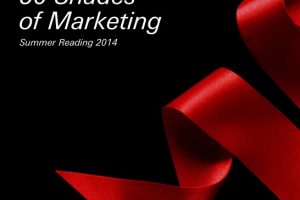Writing marketing materials for your business can be a tricky discipline, which is why we’ve assembled tips from some of the industry’s best and brightest to help you create consummate copy. Thanks to Josh Russell of Elite Business for this article.
Given that most entrepreneurs live and breathe their business, writing their marketing copy should be easy, right? Wrong. Creating a unified voice for a business across its written marketing materials can be hard enough; creating a voice that engages and excites its customers is even tougher. Fortunately, we’ve assembled a team of experts to provide guidance on capturing customers’ attention with your copy.
A good beginning
Delivering perfect copy starts with the very first word; it has to catch an audience’s attention right from the off. “Great copy must promise intrigue and information, debate and education to entice its reader to commit the necessary time and energy the writer seeks to secure,” says Andrew Cattel, client services director at Connect Advertising & Marketing, the communications agency.
If a start-up wants an audience to engage with its message it is absolutely vital to draw it in from the very first word and provide it everything it needs to know. “A lot of people forget to put the correct information in there: who, what, why, where, when and how,” explains Sara Tye, founder of redheadPR. “And they need to put that in at the start.” When the purpose of a piece of copy isn’t obvious from the off, it’s hardly likely that an audience is going to put in a significant amount of work trying to figure it out. “Getting the headings to capture their imagination or compel them to read the rest is really important,” she explains.
Are you making the most of your marketing?
Find out – book your free marketing audit here.
Finding your voice
Identifying an appropriate voice for a brand’s copy isn’t always that straightforward. A good way to work out what’s needed and how to keep your copy consistent is with a tone of voice document. “What you will often do is you will write a few paragraphs about the brand or business as if it were a person,” explains Jen Bull, head of copy at Collective London, the creative agency. “You create a large metaphor as if they were a character: ‘this is someone you’d love to talk to in a pub’ or ‘he spends his weekends in the garden’.”
Once a brand’s personality is clearer then it becomes easier to work through some dos and don’ts for a company’s copy. “Say it was for Barclays Bank, you might have an example of an opening paragraph of a letter,” Bull continues. “You’d have ‘this is how we would say it’ and ‘this is how we wouldn’t say it’ and the reasons why underneath.”
Being human
Creating sparky and engaging copy will often mean leaving the corporate speak in the boardroom. “Whether your business is B2B or B2C, too much jargon never works well,” says Matthew Morris, director of Carr Consulting & Communications. “You need to limit it when dealing with your customers.” An enterprise may have the goal of creating a professional persona for your brand but the worst way to achieve this is miring itself in dull language. “You don’t need to write or speak too formally, like an 18th century school master because it will bore the audience,” Morris continues.
The key is letting a little humanity shine through. “Writing great copy is all about thinking as a human being,” says Bull. “Like any business, SMEs need to talk about benefits. And that’s the point at which normal humans – writers, clients – can turn into corporate non-humans.” But it’s comparatively easy to avoid this trap by remembering your copy should be a conversation with the reader. “Write how you talk,” says Tye. “We always say that if you’re writing for a magazine, you’re talking to the person who’s reading it as one person.”
Be economical with words
The best copy is copy that keeps it simple. “Economy is the golden rule,” Bull explains. “I always take out everything I possibly can; the less words there are the better.” When an enterprise is writing copy it should have a pretty clear idea of what it wants to communicate and yet it can often be tempting to try to cram in a whole load of window dressing. “If you know what your message is, say it, prove it, then stop,” says Morris. “Waffle just dilutes [it].”
One way a writer can avoid this trap is by being very precise in the language they choose to use. “Don’t use loads of flowery words in what you do,” Tye says. “The reader actually wants to get to the crux of the matter right away.” She recommends that, rather than going all round the houses with your copy, you find the exact word that captures what you’re trying to say.
Check check check
However, the real make or break of a brand’s copy is the editing process. “Writing great copy is also about being a smokin’ hot proof-reader, grammarian and punctuator,” Bull says. No copy will be perfect the first time around and the only way to ensure that it creates the desired impression is to be meticulous in your editing. Without due care and attention all an enterprise’s efforts can come to naught. “Mess up and the business looks stupid,” she continues. “Bad copy casts a shadow.”
Additionally, it’s a good idea to allow some sort of cooling off period on your copy. “When you feel a piece is ‘finished’ it can be tempting to go ahead and upload or distribute it there and then,” says Ben Austin, CEO of Absolute Digital Media. Leaving it 24 hours can often help a writer get a fresh perspective on when a bon mot will bomb or a witticism is likely to wilt. “Often clever or witty content that seems like a great idea at the time is just embarrassing the next morning,” he concludes.
Source: http://elitebusinessmagazine.co.uk/
Are you making the most of your marketing?
Find out – book your free marketing audit here.


















Leave a Reply
Your email is safe with us.